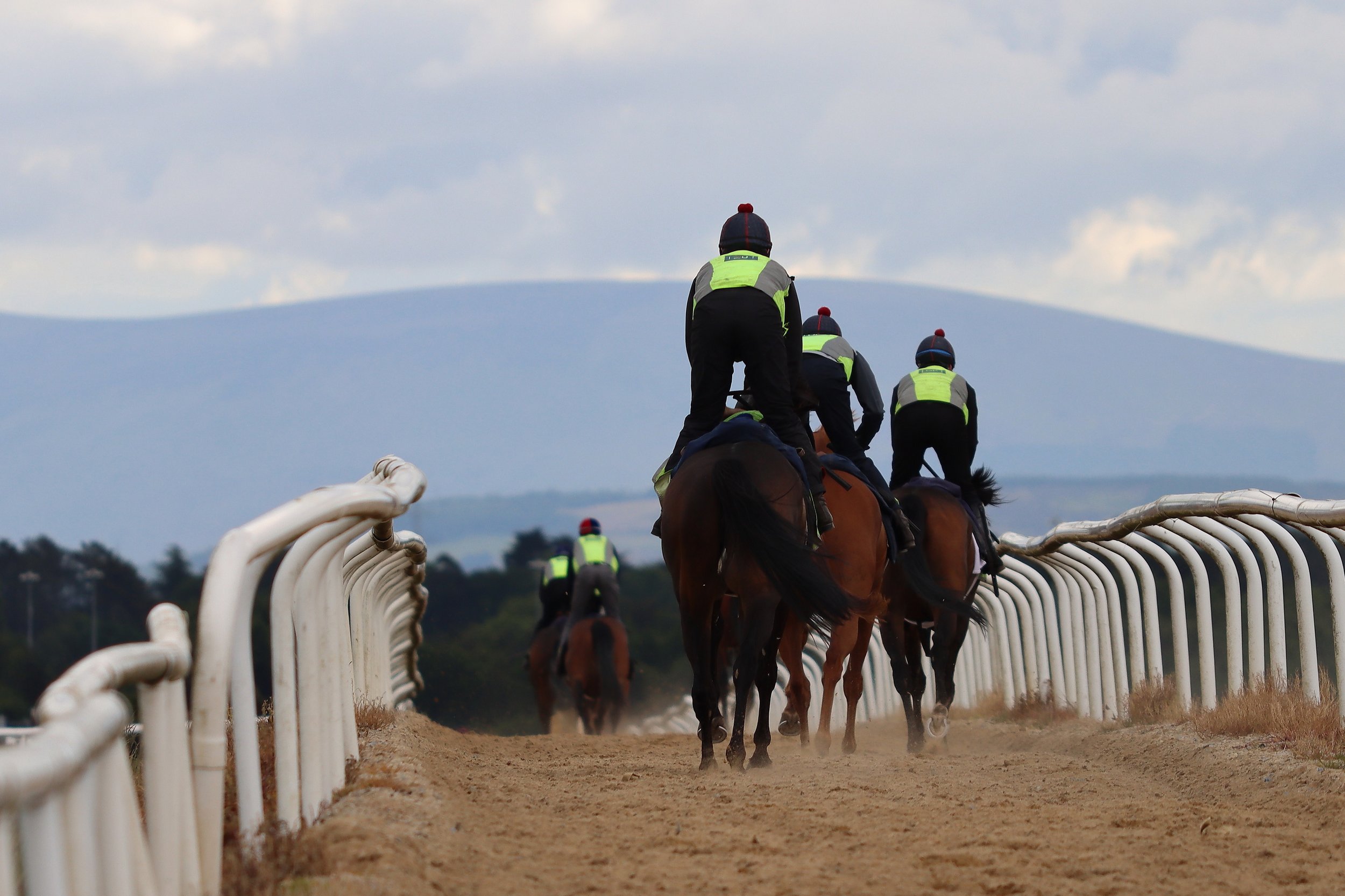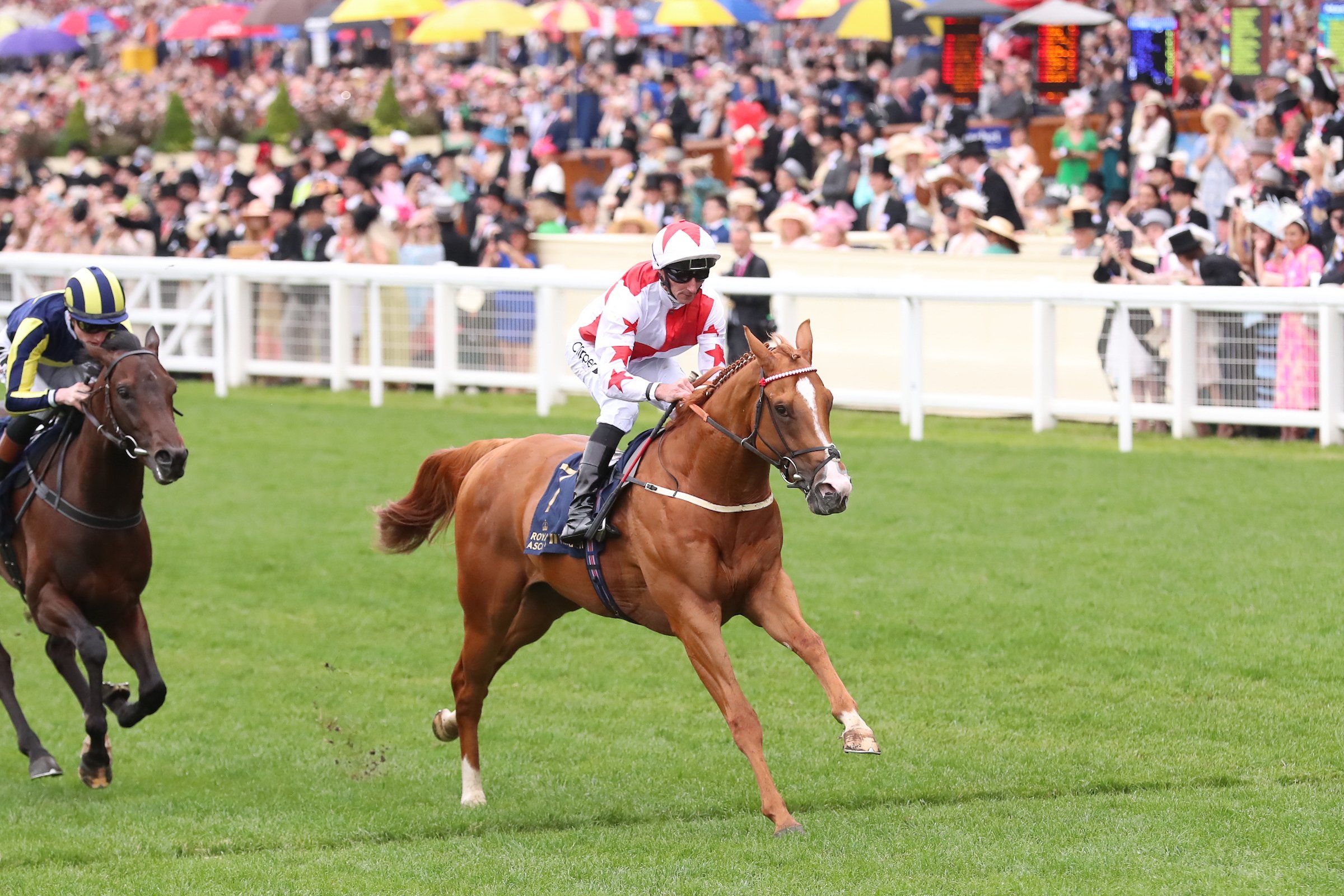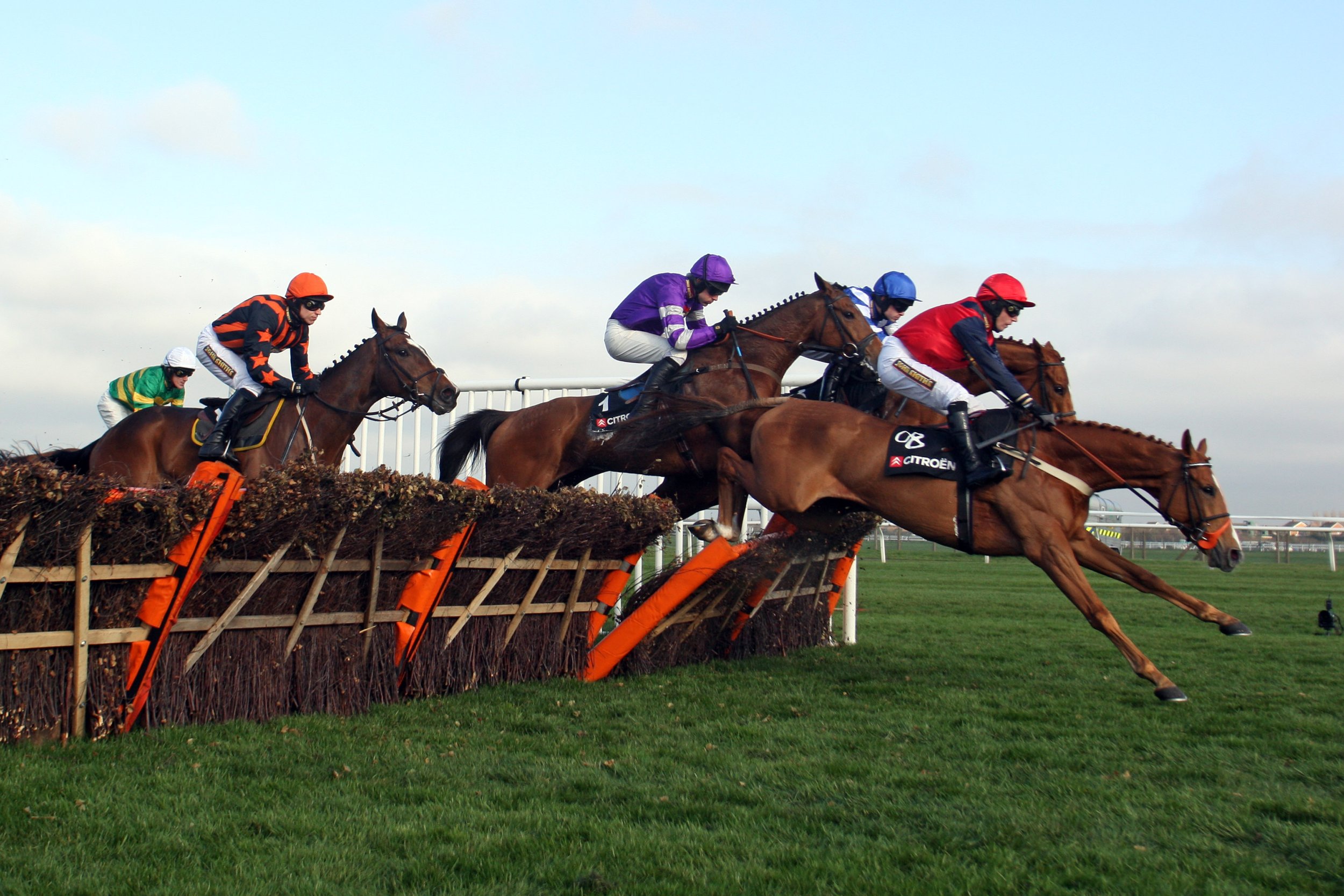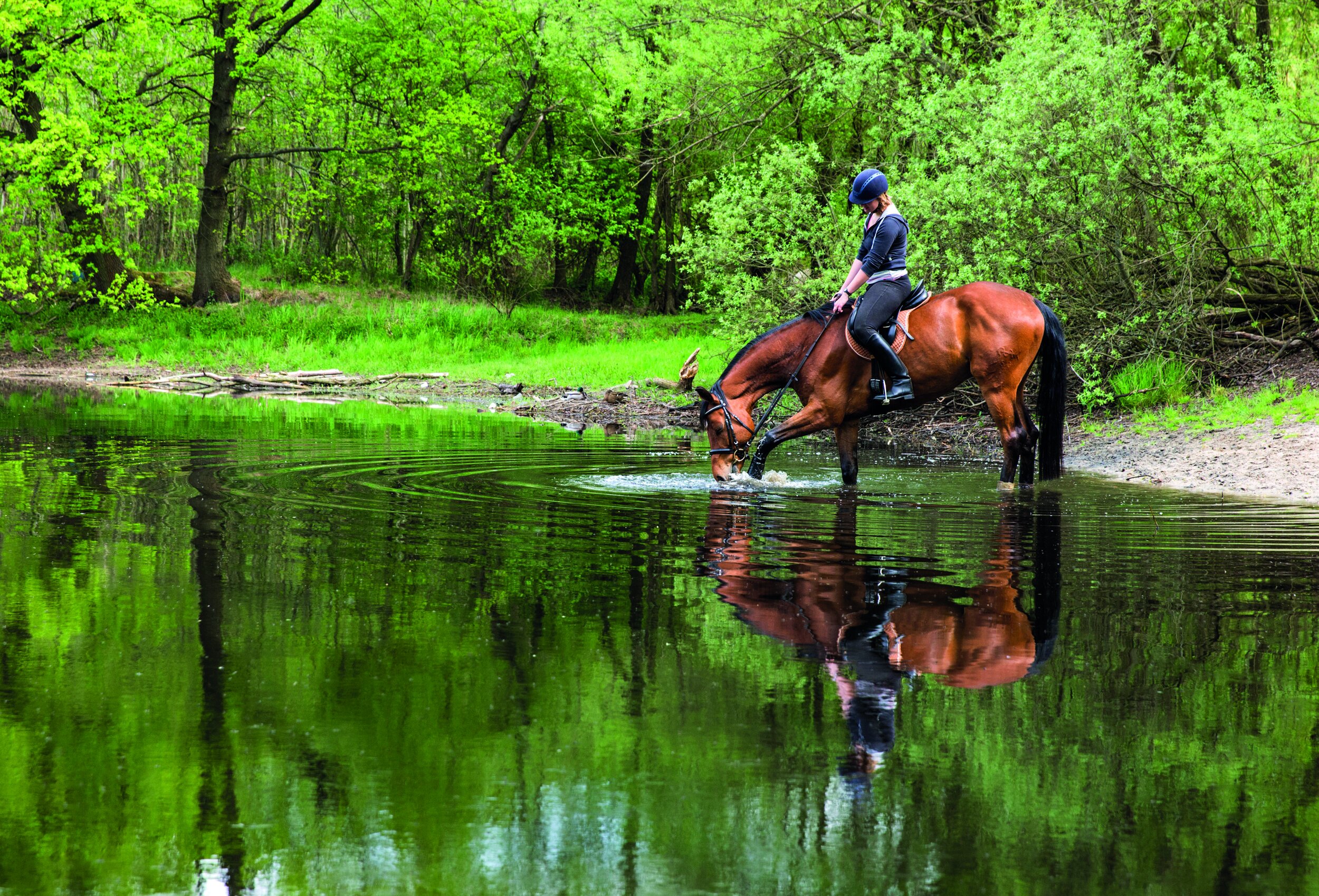Michael O'Callaghan - an up and coming Irish Trainer with a plan
/Words - Daragh Ó Conchúir
More melodious than cacophonous, the chirp from the lush foliage enveloping the drive into Crotanstown Stud on a spring morning is louder than anything emanating from the yard itself.
The horses, though fed, are shaking off the influence of Morpheus as first lot is tacked up, dreams of carrots and zoomies, crystallised while immersed in deep beds of Willie Fennin’s winter barley straw, still lingering.
Michael O’Callaghan emerges to proffer a greeting. The canines, Samhain and three-legged Liath bound over to add their greetings. Samhain is everybody’s friend and has no problem with Twilight Jet having a friendly nibble on his ear.
The pace is brisk but at the same time unhurried; relaxed O’Callaghan won’t be 34 until September, but despite growing up in a housing estate in Tralee without any exposure to equines until the Damascene conversion that occurred when he first sat on a pony as a 12-year-old, he has been involved in the industry long enough to experience plenty of slings and arrows.
He knows what he wants though, in horse and human. The latter is a key element of any successful operation—his wife Siobhain setting the tone with her level of graft and care for the horses. In a time when staffing is a huge problem throughout the industry, from office to rider to yardmen, he has a team he is very happy with. He knows the truth in the old proverb, If you want to go fast, go alone. If you want to go far, go together.
“Everyone that’s in the yard now is an asset,” O’Callaghan notes.
Success attracted significant owners very quickly and among those, past and present to link up with the Curragh-based Kerryman include Michael Iavarone, Qatar Racing, Chantal Regalado-Gonzalez and Sheikh Mohammed bin Khalifa al Maktoum. Kia Joorabchian’s Amo Racing has lived up to its name by providing significant ammunition this term—Malex and Crispy Cat winning early maidens. One of Joorabchian’s famous clients, the Aston Villa and former Barcelona and Liverpool star Philippe Coutinho, is a part owner of Olivia Maralda.
Twilight Jet—or TJ as he is known in the yard—is the apple of the Crotanstown eye. Kentucky Derby and Breeders’ Cup-winning owner, Iavarone bought half of the Twilight Son colt prior to his Breeders’ Cup run last year, while O’Callaghan and his partners, who include his father of the same name, retain the other half.
A £210,000 purchase at Goffs UK Breeze-Up in April 2021—an outlay that would a fair bit north of O’Callaghan’s average outlay—TJ ran a remarkable 11 times in his juvenile campaign from five furlongs to seven, winning twice at the shortest trip, including a Gp. 3 and finishing third twice more at group level.
Despite not being anywhere near peak fitness, he pulverised the field in the Gp. 3 Lacken Stakes at Naas on his seasonal reappearance over six furlongs last month; and Leigh Roche had to be at his strongest, not to win, but to pull his charge up. Jet has a season of Gp. 1 targets now. That Jet isn’t the only Crotanstown resident for which this may be the case is a testament to the genius of the man who has selected the vast majority of the 40 horses in the yard—and trains them.
The string leaves on the dot of 7.30am, riders hi-vis jacketed though it is a clear, bright morning. They must cross at least two, sometimes three, main roads however, depending on what gallops O’Callaghan chooses to use on the vast training grounds. This morning, it’s the Old Vic.
“The first thing I do is I’m watching them as they’re jogging over, to make sure they’re not lame or not abnormally so. Some of them have their own way or take a little while to warm up. And this is a very good warm-up. None of them were on a walker beforehand as they jog a mile to the gallop.”
Anyone from the outside world looking for one magic secret to training racehorses is on a fool’s errand because obviously, there is a conglomeration of factors. What is certain is that while you may have a system, dependent on the facilities available to you, a one-fits-all approach can never work. As far as O’Callaghan himself is concerned, observation is one watchword. Having people that understand horses and their individuality is another integral element.
“Good horsemen, I think, would make good psychologists... [because] what you’re trying to do is think the way horses think. That’s why I say to young people who ask what would make good horse people, ‘Start thinking the way the horses think.’
“They might say, ‘How [do] you do that?’ Quite simple. Put yourself in its head space. Why is he after jumping there or acting the fool? Then you learn very quickly and you become a better horse person for it, instead of just fighting them all the time. You can’t rule with an iron fist.”
It must be difficult though, and frustrating, when the horse cannot talk to you or you to it.
“But no animal can talk, and yet they can understand each other. So maybe the talking complicates things. Some people talk for the sake of talking.”
An articulate communicator, he prefers to look and listen. Interestingly, as he gathers information, he doesn’t take notes, even at the end of the day, for the purposes of refreshing the mind when attempting to solve a puzzle.
“Everything’s in my head. If I wrote it down, I’d forget it straight away. If you want to remember it, you’ll remember it, I think. They say if you said something to Michael Stoute after work, and commented that the horse gave two coughs, he’d write it on his hand with his finger.
“Two coughs,” he verbalises, as he traces the words on the palm of his hand, reconstructing how he imagines the most famous non-cricketing Barbadian doing it.
First lot is headed by Twilight Jet and the returning Steel Bull. Also included are three two-year-olds and an unraced three-year-old. We pause as they cross the bridge to the gallop.
“It’s a simple routine. They ride out six days a week and walk on a Sunday. If they’re running next week or need it, they’ll ride out on a Sunday. They do their regular two seven-furlong canters every day—nice pace. And then they work twice a week. Some horses work three times a week, some only once a week. And some fillies, you might only work them every second week.”
He breaks off to draw your attention to his main man.
“Look at Jet. Some boy, isn’t he? Well behaved. Stands there. On the way back now, he will power walk. You wanna see him. He’s power-walking and the others are jogging just to keep up. He’s just so happy with himself, he knows he’s good. And you see him there heading over now, he’s so laid back, with a bed head still on him.”
We move ahead of the string, to be at the top of the rising track. Willie McCreery is ahead of us.
“You’re looking that they’re going the pace you want them to go so you’re bringing them forward,” says O’Callaghan, when asked what he wants to see. “Ultimately, you’re building, trying to get them fitter from the last day to the next day.”
The horses approach and gallop past—nostrils flaring, hooves rhythmically pounding. The next lot comprises O’Callaghan’s four acquisitions from the previous week’s Tattersalls Goresbridge breeze-up.
“It’s the first time I watched them stretch their legs. And they weren’t hanging around.”
The feedback is positive, too. Potential starting points are discussed. There are some tracks he likes to kick off on more than others, including Cork (“The new straight course in Cork is the closest thing you’ll get to a perfect flat track.”), Navan, Leopardstown and of course, the home turf at HQ; but wherever you go, the opposition will be fierce.
“It’s mad when you think about it. We were disappointed when Crispy Cat was beaten by Blackbeard, but then he wins a Gp. 3 by six lengths and becomes [the] favourite for the Coventry. I would say the standard of two-year-olds this year in Ireland is red hot. With Ger Lyons and Jessie Harrington having so many well-bred horses; and then you have obviously Aidan and Joseph and Donnacha (O’Brien)—it has never been as competitive.
“There’s no hiding place in Ireland. None whatsoever.”
That makes winning difficult, but it is upon the resultant demand and market for Irish racehorses that can show promise in such an environment that the trainer’s business model is rooted.
The love of racing came first from picking up the Evening Echo newspaper for his granddad, also Michael, to select a few bets on a Saturday, and then waiting for the results to come up on Teletext.
Once he joined a friend at the nearby riding school, he was hooked. Gradually, he dragged his parents, and particularly his father—another Michael but with no clue about horses—into the web. Junior got a holiday job working for Tom Cooper. His dad, who after retiring from ESB set up a utility infrastructural development company (TLI Group) with his partner Thomas Fitzmaurice that was now booming, decided to buy a mare and some land so he could dabble a bit in breeding and share the journey of a new interest.
He is still doing it now, long since sold on his son’s gift. It is in Michael Sr’s now very recognisable silks of dark blue jacket with red epaulettes and red cap with dark blue star that most of the horses run in.
O’Callaghan prepped yearlings and worked with stallions at Kilsheelan and Castlehyde Studs, where Paul Shanahan was a valued mentor.
When his father sold a Galileo foal for €200,000, a plan was hatched to embark on a pinhooking enterprise together. He took the Irish National Stud management course in 2008, which is where he met Siobhain, and rented Millgrove Stud in Rathangan as a 20-year-old, when determining that he needed to be more central to continue his trading operation.
“It was a little bit stupid maybe, but for someone that comes from a background that’s not in horse racing, that hasn’t got a yard to walk into when the father retires, or a farm, or any of that crack, you have to kick on.”
O’Callaghan took out a restricted licence in 2012 and Bogini, bought out of Tracey Collins’ yard to breed from, won in Bath, Sandown and Leopardstown. She produced three winners, including Twitter sensation Caribbean Spring, or Bean, as he is known to his near 7,000 followers.
Bogini sadly died as a nine-year-old, but she sent O’Callaghan on his way. When five of the colts he sold at the breeze-ups the following season won on debut, it dawned on him that he could just move a step further down the line, use his breeze-up knowledge to buy at the sales and increase his profits by trading horses with form. For the most part, it has been a phenomenal success.
He began renting Crotanstown in 2013; and Blue De Vega, Now Or Never and Letters Of Note were early stakes winners, having been bought cheaply—the first two bought by Qatar Racing. More recently, Steel Bull won a maiden three weeks after being bought and the Gp. 3 Molecomb Stakes seven days after that. Twilight Jet is the latest to shine a light on O’Callaghan’s talents.
“I don’t look at the catalogue before I go to the sale,” O’Callaghan reveals. “I can’t let the catalogue taint what I’m seeing. You can’t train a piece of paper… when you can’t afford the pedigree, what comes first is a physical.
“I generally don’t look at a horse before I see them breeze. I watch them all breeze first, pick out by eye what I like the look of by the way they breeze. Generally the times aren’t out in time, so I head down the yard and look at 50 horses that I liked the look of breezing. It’s funny how often it works out that the horses I like the look of breezing; and then you get the team sheet and most of them are there in the top. You get a few ones that are there you didn’t like the look of and a few that you liked the look of that are down further, so you just have to weigh it up.”
So, time isn’t the be-all.
“It’s a big jigsaw, and you’re trying to put all the pieces together. There’s lads trying to make it scientific, analysing strides and this and that. My thought is if you can’t see it with your eye… you have to be able to recognise it.”
Physically, he places a good deal of store in the head, the eye and the ears. It was good enough for Vincent O’Brien, after all. After that, there is a physical make-up he relishes, and his description includes geometric lines from back and front that intersect in the middle of the back. It is easier for him to recognise it, than describe it; but you get the picture.
He deals primarily in mature, fast horses that will hopefully make into milers.
“You’ve a quicker result,” he reasons. “You’ve a quicker debt if they’re no good.”
It is a balancing act around the business model because as a sportsman, he wants to be in the parade ring on the big days, as he was with Malex in the Irish 2000 Guineas earlier this season. Blue De Vega finished third in the Classic six years ago, Now Or Never filling the same slot in the fillies’ Guineas, 24 hours later.
“The whole world recognises that Irish racing is the most competitive racing there is. You run well in any maiden in Ireland, your horse is sellable; and that’s essentially what I’m doing. Now, I’m training horses for other people as well, and you’re still trying to get the best out of everything; but for the ones we own ourselves, we’re training to trade them.
“That doesn’t mean the first day they turn up at the racecourse, it’s their Derby. They still have to progress. People don’t belong copping on if the horses don’t improve. Part of what I pride myself in is in horses going on and being good horses elsewhere, that I haven’t emptied them. You have to do the right thing by the horse because at the end of the day, if you don’t get to sell them, you still want them progressing. This quick flash is no good to anyone.
“And that doesn’t mean that you don’t go and try and win [the] first time with horses, if they’re good enough. If they’re good enough, the way you train them up to that point, they’ll still progress.
“Look at Twilight Jet last year.”
He is quick to point out that you would not run too many two-year-olds as often as Twilight Jet bounced out, but this rare type has “an unbelievable constitution” and only failed to fire in the final engagement at Del Mar. He doesn’t believe in wrapping up good horses in cotton wool either. If they are fit, they should run.
The relationship with Sheikh Mohammed bin Khalifa al Maktoum was founded on winning maidens with three breezers O’Callaghan had obtained for the Dubai royal. He was subsequently sent eight homebreds with fantastic pages, but they weren’t up to the mark. Lesson learned.
“It was a case in point of being sent horses and not having control in buying them, and what you’re given. If José Mourinho put a pair of football boots on me, he wouldn’t turn me into a footballer. It set me back a couple of years because I wasn’t buying as many horses because I hadn’t the space. I quickly realised that you need to control your own destiny. I had to go back to doing what got me there in the first place: buying horses.
“It takes a lot of funding—takes a lot of balls. It creates a lot of stress [and] takes a lot of support. At the end of the day, you have to make up your mind in what you’re going to do. You have to commit and believe in it. You have to put enough thought into it that it’s not a shot in the dark.
“It seems to be working and bringing me in the direction I want to go.”
And that is to a thriving, self-sustaining operation.
“I don’t want to just train horses for a wage. We’re building a new yard at the minute, on the far side of Gilltown Stud between Craddockstown and Dunlavin. Like anyone in business, I like making money, but it’s not all about that. There’s the competitor in me as well that wants to win races. There’s the person that wants to train these good horses and get to these big meetings.
“What I really love is going to the breeze-ups, finding the horses and then bringing them home, getting them into our system and getting to the track. That’s where I get a lot of satisfaction from… It’s not just about money, but you need to turn them into money because they cost a lot of money; and they don’t all work out.”
A new premise means a modern, clean building made from concrete and steel, full of air, non-porous and conducive to healthy animals. One of his primary focuses is on the storage barn for feed and bedding, which he says cost as much as building another 40 boxes. He places a lot of store in that element of training horses, recalling the words of Mark Johnston: “If we feed them more, we can train them harder.” And bad bedding can wipe out an entire season.
While he will continue to use The Curragh, he is installing a five-furlong uphill gallop built on land that is already 700 feet above sea level. There will be a 10-horse walker and an indoor covered ride. In time, he would love to put in a swimming pool, having seen the benefits with Twilight Jet and especially Steel Bull recovering from getting badly jarred up.
While the emphasis will always be on breezers, there is always a bit of a spread, such as the small breeding operation. He has an eye on a new angle with Twilight Jet: the possibility of turning him into a stallion.
“You don’t go around touting it because it’s so hard to do, but it’s another way of getting paid. They’re a very valuable asset if you make them up into that sort of a horse and hopefully, Twilight Jet will make it into a horse that will be attractive to stallion men. He’s by Twilight Son, a commercial stallion; he’s such a good-looking horse, he was so hardy as a two-year-old with so much racing. He was a sale-topping two-year-old out of an Exceed And Excel mare. He’s going to be very commercial as a stallion if we can get him to win a Gp. 1 or even be placed in a Gp. 1 because he was such a two-year-old and he’s still so fast.
“We sold 50% of him to Michael Iavarone to go to the Breeders’ Cup, but we retained [the other] 50% of him. You have to get paid when you’re getting paid.”
Around 40–60 horses is his “sweet spot” at the moment, though he doesn’t rule out expanding that in time. But while there are plenty of rewards and he has prospered, it is a stressful life.
“When it’s getting on top of you, that’s the last thing you think about at night, what you think about when you wake up in the middle of the night, and what you think about when you wake up in the morning.
“With horses, a lot of it is out of your control… you have to be able to realise that.”
He reminds me that Henry Cecil used to go shopping as an escape. While cutting a dapper figure in his suit on race day, O’Callaghan prefers racing Formula Vee cars at Mondello Park to the high street. He learned to fly planes before that but as well as providing an adrenaline rush, racing has the added benefit of being competitive, without him ever thinking he is going to usurp Max Verstappen and Lewis Hamilton any day.
What often strikes this observer is the talent O’Callaghan has for procuring horses—at what often turns out to be value and turning them into a profit, which might quite easily have never been discovered, given his background. Is what he sees innate, or can anyone learn it?
“You can learn. You have to have the head to learn, and maybe there’s an innate ability there. I don’t know. I’ve learned everything. I’ve the type of brain that if I have an interest in something, I’ll immerse myself in it and I’ll learn as much as I can about it. I’ll nearly become addicted to it. I think everybody that excels in a sphere, they have to have that.”
He has certainly immersed himself in this racing world, combining high-stakes poker with a business plan.
“This game, the way I’m doing it, you’re all-in, every day. A bad year would wipe you out. What you’re doing is you’re trying to get a right beano of a year to put you on a footing with a bit of comfort. But look, Jim Bolger is all-in, every day, too. At this stage of his life he is probably not actually, but there was a point for a long time that he was.
“You have to back yourself.”
And deliver. So far, so good.





















